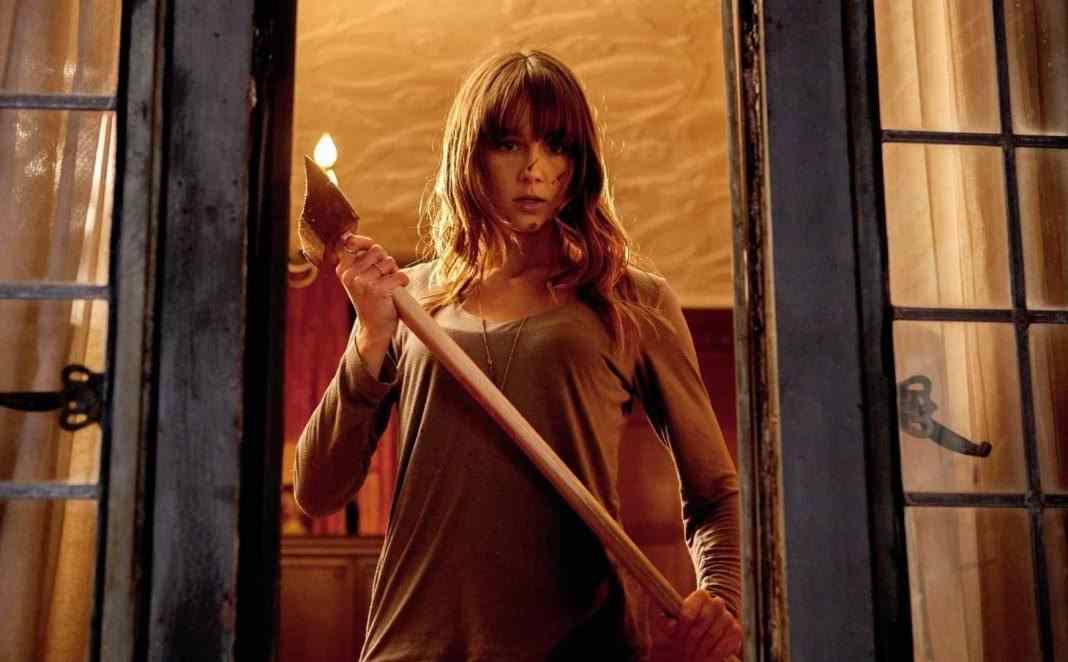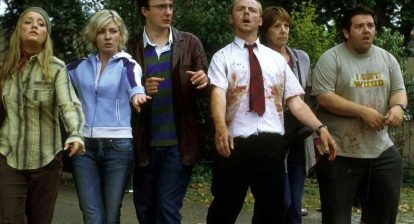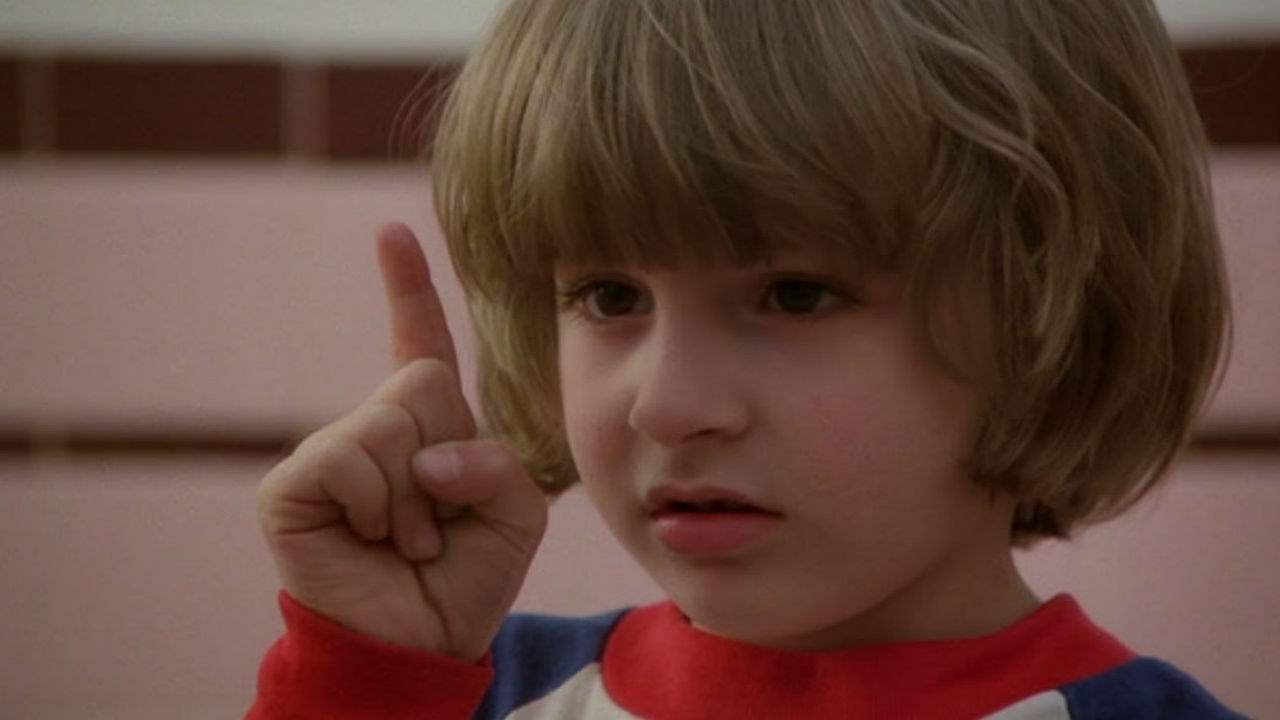Growing up in the video store days, obsessing over every title in the aisles, even if I’ve still never seen some of them to this day, I would start to notice things after awhile that most people don’t typically look that hard at. Sure, people remember the names of actors that they really like, as I did with the likes of Robert Englund, Tony Todd and Jeffrey Combs. But I would also notice as a kid that a lot of the movies I was renting had the same person listed as director. John Carpenter was the easiest discovery because his name was printed in large letters above the titles of all of his films. After a certain point, though, I’d start to notice that a lot of the stuff I rented had the same logos popping up in the beginning.
Full Moon was an easy standout. They prided themselves on being a straight-to-video B-Movie empire and each movie was very good at offering a glimpse into the day to day world of that company. I’d also notice the likes of Empire Pictures, Full Moon’s marginally classier predecessor. I’d notice Cannon Films, of course. But I would also notice that many of the titles I’d rent most frequently came from Vestron.
Vestron doesn’t seem to have the audience that other B-Movie companies have. Most people don’t remember them at all and many of the ones who do don’t remember them fondly. For me, though, they were an integral part of my introduction to horror.
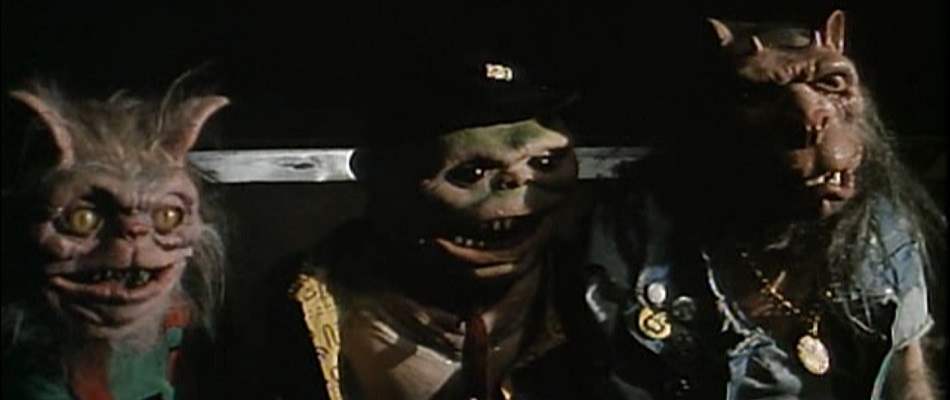
It’s no surprise to me that Vestron wound up making their own sequel to the Ghoulies franchise and no other Empire production because it represents their own bizarre, offbeat, off-color nature so well. Ghoulies go to College is way more over the top than the first two, which is saying an awful lot. It takes a certain kind of talent, and I use that word lightly, to look at those first two movies and be confident that you can go to a stranger, stupider place. It took me years to track down Ghoulies go to College and watching it as an adult, it doesn’t hold up as well as it probably did to a kid who thought each and every fart joke packed into that running time was hilarious. Yet, even now I have to admit that there’s a weird sort of charm about it.
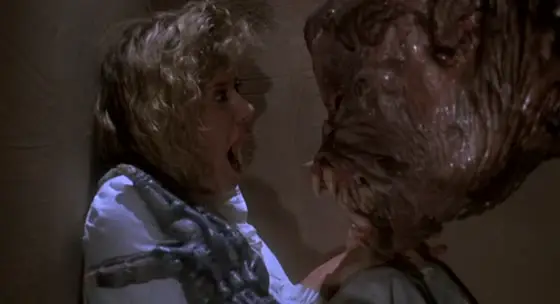 And Vestron also produced another immortal sequel to a cult classic of the 1980’s in the form of C.H.U.D. II: Bud the C.H.U.D. Originally meant as a Return of the Living Dead sequel, it was sacrificed to Vestron to reshape it as a sequel to C.H.U.D. so that we could one day get Return of the Living Dead 3 instead, for which I am eternally grateful. Bud the C.H.U.D. is more than a bad movie. It’s not on the level of Troll 2, but it still has nothing going for it in terms of story, character or (especially) humor. Yet, despite all that, I cannot bring myself to hate this film. In fact, for awhile I was kind of obsessed with it. There’s something spectacular about how unashamedly bad it is. You can watch it a hundred times and still not be sure if it’s an accident or if each piece of that puzzle is exactly what it was intended to be, like staring at a great splatter painting.
And Vestron also produced another immortal sequel to a cult classic of the 1980’s in the form of C.H.U.D. II: Bud the C.H.U.D. Originally meant as a Return of the Living Dead sequel, it was sacrificed to Vestron to reshape it as a sequel to C.H.U.D. so that we could one day get Return of the Living Dead 3 instead, for which I am eternally grateful. Bud the C.H.U.D. is more than a bad movie. It’s not on the level of Troll 2, but it still has nothing going for it in terms of story, character or (especially) humor. Yet, despite all that, I cannot bring myself to hate this film. In fact, for awhile I was kind of obsessed with it. There’s something spectacular about how unashamedly bad it is. You can watch it a hundred times and still not be sure if it’s an accident or if each piece of that puzzle is exactly what it was intended to be, like staring at a great splatter painting.
Still, as distributor, Vestron released some of the best titles of the day. From The Gate to The Monster Squad to Evil Dead II, Re-Animator and Dressed to Kill. As producer, not everything was artfully done trash, either. Campy as they may have been, Vestron Pictures was responsible for one of my favorite, underrated creature features of the 1980’s: Waxwork. Bringing all the classic monsters together like an unrated Monsters Squad, Waxwork not only had great effects and gore sequences, but surprisingly great characters as well. By introducing the Marquis de Sade as one of the central antagonists, it’s no surprise that director Anthony Hickox would go on to helm a Hellraiser sequel. But it’s not just Waxwork that gives Vestron street cred as a production company, they were also behind pretty major efforts like Earth Girls Are Easy and the enormously successful Dirty Dancing.
 Because of the success of things like that, they were allowed to make bizarre treats like 976-EVIL 2: The Astral Factor, which features the mashup between It’s a Wonderful Life and Night of the Living Dead that nobody knew they needed until Jim Wynorski gave it to them. They were allowed to make The Unholy, which is one of the most entertaining Exorcist ripoffs to come about during the ‘80’s about a demon that seduces priests in the form of a beautiful woman but also takes the form of a monstrous troll-dog.
Because of the success of things like that, they were allowed to make bizarre treats like 976-EVIL 2: The Astral Factor, which features the mashup between It’s a Wonderful Life and Night of the Living Dead that nobody knew they needed until Jim Wynorski gave it to them. They were allowed to make The Unholy, which is one of the most entertaining Exorcist ripoffs to come about during the ‘80’s about a demon that seduces priests in the form of a beautiful woman but also takes the form of a monstrous troll-dog.
I am so grateful that they were allowed to do the things they were allowed to do. I’m so happy that Vestron had the freedom to be the artfully sleazy company that they wanted to be. They stand out from the ranks of Empire, Troma and even Full Moon. As a production company, like those other studios, they had a vibe that was completely their own. And I will always remember their bizarrely charming style, one that is all too lost among the low budget horror of today.


